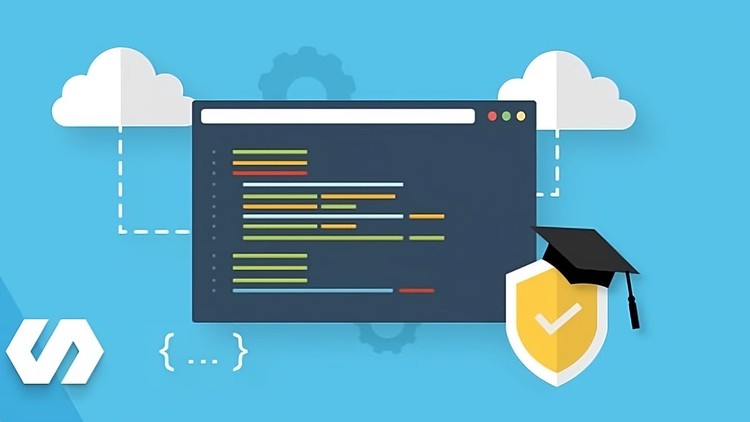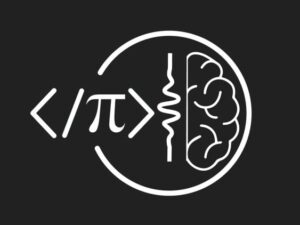Ethereum and Solidity: The Complete Developer's Guide
- Descrição
- Currículo
- FAQ
- Revisões
Smart Contracts? They’re here. The Ethereum Blockchain? Covered. Solidity? Yep!
There can be no understating it: Ethereum and Blockchain technology is the most disruptive force in years. Companies cannot hire developers who understand blockchain technologies fast enough, but there are a tiny number of resources published to help you truly understand what blockchains are used for, let alone build apps with them. That’s the purpose of this course: to be the best resource online for learning about Ethereum, blockchains, and how to build apps with this new technology.
The development community is still figuring out the best way to use Ethereum in the creation of new and exciting apps. I spent a tremendous amount of time to research and create best practice for interfacing with Ethereum from Javascript. I can’t overstate it enough; this course will show you the best and most easily repeatable patterns for creating production-ready apps with Ethereum.
What tools and libraries are used?
The Ethereum tech ecosystem is in constant change. Don’t be fooled by other courses that mention how you’ll learn a dozen different libraries! Every library that you’ll use with Ethereum breaks and is deprecated on a near-weekly basis! Instead, this course will teach you how to assemble your own boilerplate package to develop, compile, and test Smart Contracts. By learning the core technologies, you’ll be prepared to adjust to Ethereum no matter how the ecosystem changes.
What is Ethereum?
Ethereum is a cryptocurrency much like Bitcoin, and it has been heralded as Bitcoins successor. Whereas Bitcoin currently has issues scaling with an increasing backlog of transactions, Ethereum is poised to surpass Bitcoin in performance, popularity, and value. Ethereum was created to help developers like you create applications focused around transferring money or value from one party to another.
What is Solidity?
Solidity is a programming language for writing Smart Contracts. Essentially, think of it as a way to control a bank account with code. With Solidity, we can write applications that simulate a crowd funding campaign, a lottery, a loan, or any other type of financial instrument. Don’t be intimidated by learning ‘another’ programming language; Solidity is known to be quite similar to Javascript and exceptionally easy to pick up for anyone who has previous JS experience. This course will give you all the tools you need to master Solidity.
-
1IntroductionVídeo Aula
-
2Course ResourcesTexto
-
3A Short History LessonVídeo Aula
-
4Link to Original Bitcoin White PaperTexto
-
5What is Ethereum?Vídeo Aula
-
6Interfacing with Ethereum NetworksVídeo Aula
-
7Metamask Setup and ConfigurationTexto
-
8Ethereum AccountsVídeo Aula
-
9Getting Test Ether to Use in the CourseTexto
-
10What's a Transaction?Vídeo Aula
-
11Why'd We Wait?Vídeo Aula
-
12A Quick Note About the Next LectureTexto
-
13Basic BlockchainsVídeo Aula
-
14Block TimeVídeo Aula
-
15Smart ContractsVídeo Aula
-
16The Solidity Programming LanguageVídeo Aula
-
17Updated Remix Instructions for new UI - Do Not SkipTexto
-
18Our First ContractVídeo Aula
-
19Contract StructureVídeo Aula
-
20Function DeclarationsVídeo Aula
-
21Deploying Contract in New Remix UITexto
-
22Testing with RemixVídeo Aula
-
23Redeploying ContractsVídeo Aula
-
24Behind the Scenes of DeploymentVídeo Aula
-
25More on Running Functions Than You Want to KnowVídeo Aula
-
26Wei vs EtherVídeo Aula
-
27Gas and TransactionsVídeo Aula
-
28Mnemonic PhrasesVídeo Aula
-
29We Need More Test Ether!Vídeo Aula
-
30Obtaining More Test Ether from Recommended FaucetTexto
-
31Installing Node.js, npm and GitTexto
-
32Contract DeploymentVídeo Aula
-
33Completed BoilerplateTexto
-
34Project RequirementsVídeo Aula
-
35Project File WalkthroughVídeo Aula
-
36Compiling SolidityVídeo Aula
-
37Invalid asm.js or Constructor Deprecation WarningTexto
-
38The Compile ScriptVídeo Aula
-
39Testing ArchitectureVídeo Aula
-
40Breaking Change - Web3 v4 and GanacheTexto
-
41Installing ModulesVídeo Aula
-
42Web3 VersioningVídeo Aula
-
43Web3 ProvidersVídeo Aula
-
44Testing with MochaVídeo Aula
-
45Mocha StructureVídeo Aula
-
46Fetching Accounts from GanacheVídeo Aula
-
47Refactor to Async/AwaitVídeo Aula
-
48Deployment with Web3Vídeo Aula
-
49Deployed Inbox OverviewVídeo Aula
-
50Asserting DeploymentVídeo Aula
-
51Verifying the Initial MessageVídeo Aula
-
52Testing Message UpdatesVídeo Aula
-
53Deployment with InfuraVídeo Aula
-
54Infura SignupTexto
-
55Super Important Note about Seed / Recovery Phrase SecurityTexto
-
56Wallet Provider SetupVídeo Aula
-
57Deployment to TestnetVídeo Aula
-
58Observing Deployment on EtherscanVídeo Aula
-
59Remix Permissions and MetamaskTexto
-
60Deployed Contracts in RemixVídeo Aula
-
61Project ReviewVídeo Aula
-
62Updating Your Inbox Project to Solc v0.8.19Texto
-
63The Lottery ContractVídeo Aula
-
64Lottery DesignVídeo Aula
-
65Reminder on Updated Remix UITexto
-
66Basic Solidity TypesVídeo Aula
-
67Starting the Lottery ContractVídeo Aula
-
68The Message Global VariableVídeo Aula
-
69Overview of ArraysVídeo Aula
-
70Overview of Mappings and StructsVídeo Aula
-
71Big Solidity GotchaVídeo Aula
-
72Entering the LotteryVídeo Aula
-
73Validation with Require StatementsVídeo Aula
-
74The Remix DebuggerVídeo Aula
-
75Pseudo Random Number GeneratorVídeo Aula
-
76Selecting a WinnerVídeo Aula
-
77Sending Ether from ContractsVídeo Aula
-
78Resetting Contract StateVídeo Aula
-
79Requiring ManagersVídeo Aula
-
80Function ModifiersVídeo Aula
-
81Returning Players ArrayVídeo Aula
-
82Contract ReviewVídeo Aula
-
83Completed Boilerplate - Do Not SkipTexto
-
84New Test SetupVídeo Aula
-
85Test Project UpdatesVídeo Aula
-
86Web3 v4 and Ganache Breaking Change ReminderTexto
-
87Test Helper ReviewVídeo Aula
-
88Asserting DeploymentVídeo Aula
-
89Entering the LotteryVídeo Aula
-
90Asserting Multiple PlayersVídeo Aula
-
91Try-Catch AssertionsVídeo Aula
-
92Testing Function ModifiersVídeo Aula
-
93End to End TestVídeo Aula












